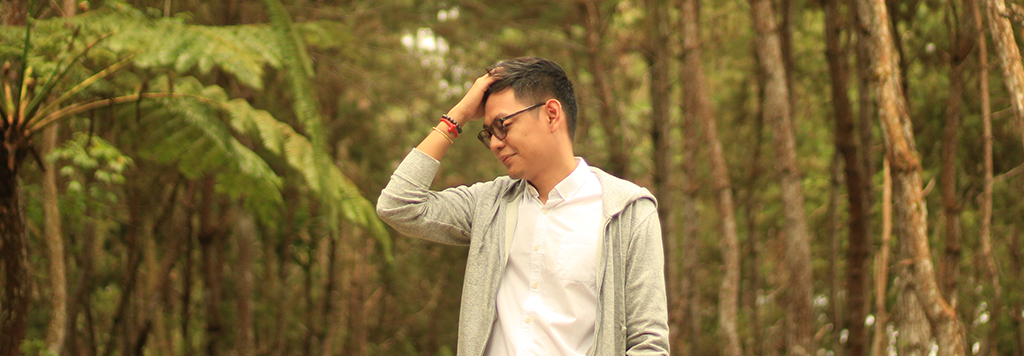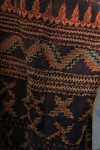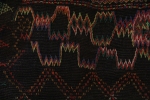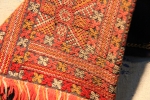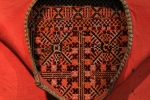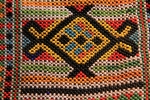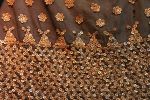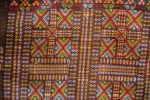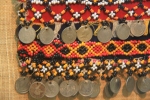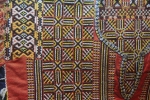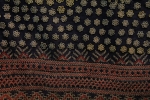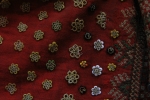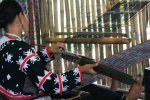While reading on Participatory Rural Appraisal and the notes from Dr. Tomas’ presentation, I was reminded of a climactic moment in Isaac Asimov’s “Foundation” right before the planet Terminus was colonized by the Anacreonians, in a meeting of the Foundation’s Board of Trustees and Salvor Hardin, Mayor of Terminus:
Hardin continued: “It isn’t just you. It’s the whole Galaxy. Pirenne heard Lord Dorwin’s idea of scientific research. Lord Dorwin thought the way to be a good archaeologist was to read all the books on the subject—written by men who were dead for centuries. He thought that the way to solve archaeological puzzles was to weigh the opposing authorities. And Pirenne listened and made no objections. Don’t you see that there’s something wrong with that?”
Again the note of near-pleading in his voice.
Again no answer. He went on: “And you men and half of Terminus as well are just as bad.. We sit here, considering the Encyclopedia the all-in-all. We consider the greatest end of science is the classification of past data. It is important, but is there no further work to be done? We’re receding and forgetting, don’t you see? Here in the Periphery they’ve lost nuclear power. In Gamma Andromeda, a power plant has undergone meltdown because of poor repairs, and the Chancellor of the Empire complains that nuclear technicians are scarce. And the solution? To train new ones? Never! Instead they’re to restrict nuclear power.”
And for the third time: “Don’t you see? It’s galaxy-wide. It’s a worship of the past. It’s a deterioration—a stagnation!”
Maybe I still have an Asimovian hangover that let’s me wander off his galactic empire and pepper all my waking thoughts with his opus magnus ‘Foundation’. Maybe. But I really find this scene pregnant with meanings and especially on both positive and social sciences, significantly implores introspection in their different fields. Asimov smacks the scientist/researcher with the fundamental question of “so what?” What are you trying to prove and what good will it give us (the final end)? How will it move humanity forward and not just serve individuals or groups? There is a strong sense of questioning science’s purpose in this scene and to the social scientist, it begs the same questioning for whatever the research agenda is and demands an answer to “for what end?” As a student of Anthropology, I try to reflect on Anthropology’s purpose, and does it fulfill the all-encompassing objective of Science to advance Man? I will not claim that I have the answers to these questions, but they are the backdrops to how the specific science of Anthropology reveals its parcel of truth through methods uniquely or partly possessed it as its own.
Anthropology, as with all other fields, have set goals that set it apart from Sociology, Psychology, Philosophy, Natural Sciences, etc. These goals that define the field also set the possibilities for their research areas. Defining Anthropology as a science that deals primarily with “the whole human condition: past, present and future; biology, society, language and culture, with particular interest in the diversity that comes through human adaptability,”[1] one becomes dizzy with the depth and breadth of its scope. Consider also the multi-paradigmatic, multi-methodological, multi-disciplinary nature of this science, and one is lucky enough not to suffer from aneurysm if he tries to grasp the fullness and wholeness of this field. If we deem this definition true, are Linguistics and Sociology part of Anthropology? Yet if Sociology gave birth to Anthropology in the sepia-toned era of Emile Durkheim, did a daughter just gave birth to her mother? The evolution of this field indeed sprung forth from the discomfiture in Sociology, at once a specialization in the area of the ‘study of savages’ it has grown to an encompassing behemoth that now includes even climate change adaptation and migration.
What sets Anthropology apart from the other sciences, I believe, are the unique methods employed in gathering data. Direct participation and involvement of the researcher in the daily life of his/her research partners especially in ethnography “aims to gain a close and intimate familiarity with a given group of individuals (such as religious, occupational, sub-cultural group or a particular community) and their practices through an intensive involvement with the people in their cultural environment, usually over an extended period of time”[2]. In this manner of data gathering, the researcher becomes, as it is, a part and parcel of his own study. Although this is not a perfect method (is there one?) because it opens the research to subjective interpretations as the researcher is never totally and wholly of and in the other. In the positive sciences, there is a clear distancing or dissociation of the researcher and the researched to be able to set an objective separation, in contrast to the seeming conjunction and proximity in Anthropological studies.
Another method employed by Anthropologists and other social scientists is Participatory Rural Appraisal. Here I will try to lengthen my discussion to drive home a point introduced by Asimov’s Foundation.
Participatory Rural Appraisal (PRA) is “a growing combination of approaches and methods that enable rural people to share, enhance and analyze their knowledge of life and conditions, to plan and act and to monitor and evaluate. The role of the outsider is that of a catalyst, a facilitator of processes within a community which is prepared to alter their situation”[3]. Coming from this method is a more specialized kind of Participatory Rural Appraisal, the Rapid Rural Appraisal (RRA) which is an “extractive research methodology consisting of systematic, semi-structured activities conducted on-site by a multi-disciplinary team with the aim of quickly and efficiently acquiring new information about rural life and rural resources”[4]. Here there is still the trademark direct participation and involvement of the researcher, yet there is another element here of community participation in which the knowledge and opinion of the research partner or clientele (beneficiaries of a government or nongovernment project) is incorporated in the planning and management of development projects and programs. It closely follows “the Freirian theme, that poor and exploited people can and should be enabled to analyze their own reality.”[5] Aside from the speed in which data are extracted from the research partners, the two also differs in the direction of intent so that RRA is “learning rapidly and directly from villagers”[6] while PRA is “learning with villagers”[7].
As a student of Anthropology, we are always reminded that data in and of themselves are meaningless. PRA and RRA are two such methods with an end goal of assisting the poor, marginalized and oppressed sector of the society such that it is often the tool employed by nongovernment and community development workers. Often, results of these studies are used to provide assistance and aid to the research partner/clientele and that “instead of creating knowledge for the advancement of a field or for knowledge’s sake, PRA and RRA are iterative processes, incorporating research, reflection and action in a cyclical process”[8].
In both direct participant observation and PRA/RRA, there is equitable partnership between researcher and research partner community. In equitable partnerships it “require sharing power, resources, credit, results and knowledge, as well as a reciprocal appreciation of each partner’s knowledge and skills at each stage of the project, including (depending on the research) problem definition/issue selection, research design, conducting research, interpreting results, and determining how the results should be used for action”[9]. As a field of science that focuses and sometimes forces us to consider the ways in which we understand the other, Anthropology’s methods always involve the other not as a passive variable in an experiment or a guinea pig in a laboratory but an active and empowered collaborator, consultant and participant in researches.
Here, I think, is the proper juncture to return to the ‘Foundation’.
Science’s goals are as diverse as the different fields under her mantle. Each branch of science has an individual purpose, but they all come together to form one encompassing resolve, which is to seek more knowledge/information about our world, ourselves and in turn use that knowledge to improve humanity’s quality of life.
The demise of Asimov’s Galactic Empire was brought by the decline in Science and the waning courage to discover new information about our world. Although this is very farfetch in our contemporary era, we are nevertheless being challenged by the idea of the importance of scientific/anthropological discoveries in moving humanity forward and in searching for Truth, may it be true true, approximately true and likely true, yet always spurred by the curiousity of the Homo sapiens sapiens. Science was the reason for the Empire’s demise yet curiously it was also its very spirit that salvaged it, mainly because Science became involved and engaged with the communities, instead of being cold and distant. The field of Anthropology, especially its various methods of directly participating and involving in, with and the community in its researches, is already Science that is involved and engaged with the same people that it serves. In its pursuit to understand the other, Anthropology and the proper Social Sciences are indeed foundations, and more, upon which humanity’s feet firmly stand.
[1] Conrad Philip Kottak, Anthropology: The Exploration of Human Diversity, 12th Edition, New York: McGraw-Hill, page 3.
[2] Wikipedia, Participant Observation, http://en.wikipedia.org/wiki/Participant_observation, retrieved January 7, 2012.
[3] Luigi Cavestro quoting Robert Chambers (1995 and 1997), P.R.A. – Participatory Rural Appraisal: Concepts, Methodologies and Techniques, paper written for the Universita’ Degli Studi di Padova Facolta’ di Agraria, October 10, 2003, page 5.
[4] Wikipedia, Participatory Rural Appraisal, http://en.wikipedia.org/wiki/Participatory_rural _appraisal, retrieved on January 10, 2013.
[5] Ibid.
[6] Cavestro, page 4.
[7] Ibid.
[8] Wikipedia, Community-based Participatory Research, http://en.wikipedia.org/wiki/Community-based_participatory_research, retrieved on January 11, 2013.
[9] Ibid.
